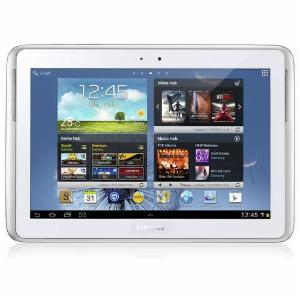Many people think of tablets as large smartphones, but the difference is much bigger if you talk to an app developer. While the larger screen is definitely something to contend with, there are other hardware components and layout issues to consider when developing an app for a tablet. These are the major differences that you should consider when making anything for the tablet platform.
Screen Size
Most smartphones have a 4-inch display while tablets have a 7-inch or 10-inch display. This might seem like a small difference, but it’s not. The app developer must enlarge the app to fit the tablet’s screen without distortions. While the app can stretch by itself without any tweaking, this will usually lead to problems such as blurry graphics and slow loading times.
The screen size also facilitates a more complex layout. For example, an email app for a smartphone tends to have one major screen. This same layout will look clunky and huge on a tablet. It’s better to add different sections to the layout so that it looks natural. While this won’t apply to all apps, such as gaming apps, it will affect many functional and organizational apps.
Graphics
If you are creating an app for the iOS, the resolution and graphics can remain mostly identical since the iPhone and iPad have nearly the same resolution in terms of dots per inch. If you are producing an app for the Android environment, then bigger doesn’t always mean better. There are many budget tablets that have low resolutions.
You must create your app so that it can conform to these different resolutions. You can usually do this by allowing users to change the quality of the app’s graphics.
Processing Power
Tablets commonly have better CPUs for two reasons. One reason is because they are bigger and it’s much easier to add a larger CPU into the body of the tablet. The other reason is because tablets are generally used similarly to laptops, which means that they must be strong enough for this type of usage.
This allows an app developer to create an intensive app for a tablet that may not work on a smartphone. If you have been planning to create an app that needs a lot of power, then consider developing it for the tablet platform.
Integration
While smartphone users want the ability to integrate apps with their desktop, most tablet users demand the ability to integrate both smartphone and tablet apps. This is because tablet users are usually more into technology than people that just have smartphones. They want to use the app on both a tablet and smartphone without losing their place.
If you build an app for the tablet platform, then ensure that it can easily integrate with your smartphone version of the app to keep users happy.
Connectivity
One of the few areas where the smartphone is better is connectivity. The vast majority of smartphones are constantly connected to a 3G or 4G network. While there are many tablets with this type of connectivity, there are also others that lack this ability.
Try emphasizing offline activity when creating an app for tablets so that those without 3G or 4G connectivity can still use the app.
Tablets are wonderful, but they present challenges for app developers. You have to change the layout and resolution, and you must also ensure that your tablet software integrates with the smartphone app to keep people happy. If you consider these differences when building an app, then you should have no problem creating a program that is great for the tablet platform.
This article was contributed by CJ Gordon, gadget guru, tech geek, and programmer.

